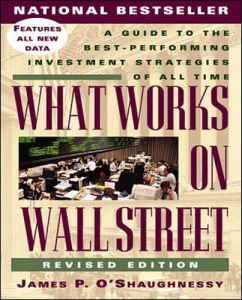Join getAbstract to access the summary!

Join getAbstract to access the summary!
James P. O'Shaughnessy
What Works on Wall Street
A Guide to the Best-Performing Investment Strategies of All Time
McGraw-Hill, 1998
What's inside?
Believe it or not, there were once time-tested rules that guided investment strategies. Read what worked — and what didn’t — in the 45 years before the Internet bubble left Earth.
Recommendation
Individual investors are constantly frustrated by their inability to beat the market. Most portfolios lag behind benchmarks because investors fall in love with sexy stories and chase stocks with high valuations. Such a strategy (if undisciplined buying and selling can be called a strategy) is exactly the wrong tack to take. James O’Shaughnessy painstakingly tracked stock returns over a 45-year period and found that investing in companies on traditional value measures - PE ratios, price-to-sales ratios, and price-to-book ratios - beat the market. Unfortunately for today’s investors, the data for this study runs only through 1996, and misses much of Internet boom, in which traditional measures like PE ratios were abandoned with abandon. Nevertheless, getAbstract.com recommends this clear and insightful book to all investors, especially those newcomers who have to this point been carried along by the market bandwagon, but one day might need a crash course in some time-tested investment strategies.
Summary
About the Author
James P. O’Shaughnessy is chairman and CEO of O’Shaughnessy Capital Management of Greenwich, Connecticut. He manages four no-load funds. A regular guest on CNN and CNBC, O’Shaughnessy is author of Invest Like the Best and How to Retire Rich.


















Comment on this summary